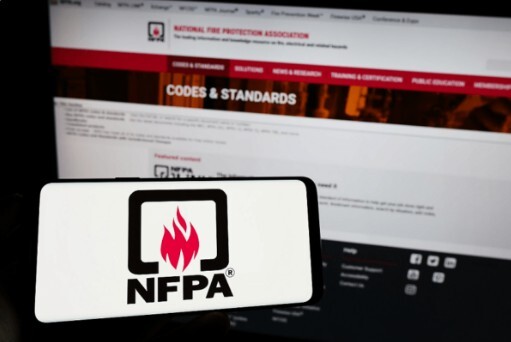More from The National Fire Protection Association
More in Politics
Related Blogs
Archives
Social Share
NFPA 70B 2023 PDF: How It Impacts Electrical Systems and Equipment?
Body

The safe and reliable operation of electrical systems is critical across all industries. Whether in manufacturing plants, commercial buildings, or institutional settings, well-maintained electrical infrastructure helps prevent downtime, enhances performance, and reduces the risk of accidents. Among the key documents influencing maintenance practices, the NFPA 70B 2023 PDF version offers a major shift in how organizations approach electrical asset management and preventive maintenance strategies.
Evolution of NFPA 70B
Historically, the National Fire Protection Association 70B was considered a recommended practice rather than a binding standard. Over time, as electrical systems have grown more complex and sensitive to failure, the need for structured, proactive maintenance has become clearer. The 2023 update marks a significant transformation by upgrading NFPA 70B from a recommended practice to a full standard. This change alters the way facilities must manage electrical systems, encouraging systematic and verifiable maintenance rather than optional best practices.
Why the 2023 Update Matters
The most important change in the 2023 edition is its enforceability. As a standard, its guidance can now be referenced in contracts, insurance policies, and regulatory requirements. Organizations ignoring these practices could face greater liability in the event of electrical incidents or equipment failure.
The new version promotes condition-based and risk-based maintenance rather than traditional time-based approaches. This means facilities are expected to monitor the actual performance and condition of equipment to schedule maintenance, which minimizes unnecessary interventions and reduces costs over time.
Core Areas Affected by NFPA 70B
1. Preventive Maintenance Requirements
Maintenance of electrical systems is no longer a suggestion. The standard outlines clear requirements for preventive maintenance, including schedules, documentation, and qualified personnel. Facilities must now build structured programs with checklists, defined intervals, and clear objectives to maintain compliance.
2. Equipment Scope and Coverage
The document includes an expanded scope of electrical equipment, covering transformers, switchgear, circuit breakers, motors, UPS systems, and more. Each type of equipment has specific guidelines regarding inspection, testing, lubrication, cleaning, and replacement of parts.
3. Documentation and Record-Keeping
Another key shift is the emphasis on accurate documentation. Facilities are now required to maintain detailed maintenance logs, testing results, and inspection records. These documents can be used during audits or post-incident investigations to demonstrate adherence to the standard.
4. Personnel Qualifications and Training
Only qualified personnel are permitted to perform maintenance as outlined in NFPA 70B. The 2023 version emphasizes technical competence and the use of proper personal protective equipment (PPE), which aligns with occupational safety standards like NFPA 70E.
Implications for Electrical System Performance
When implemented effectively, the updated standard enhances the reliability and efficiency of electrical systems. Some of the measurable benefits include:
-
Reduced downtime: Proactive maintenance helps identify early signs of failure, allowing timely repairs before issues escalate.
-
Extended equipment life: Proper care of components ensures systems remain in service longer, reducing the need for capital replacements.
-
Lower operational costs: Avoiding emergency repairs and unscheduled outages can significantly cut maintenance budgets.
-
Improved safety: Well-maintained systems are less likely to suffer catastrophic failures, reducing the risk of injury and property damage.
Risk-Based Maintenance Approach
A major addition in the latest version is the promotion of risk-based maintenance, which requires evaluating the likelihood and consequences of equipment failure. Facilities are encouraged to prioritize maintenance resources on assets that present the highest risk, using data such as:
-
Equipment criticality
-
Historical performance
-
Environmental conditions
-
Operating load profiles
This shift toward intelligent maintenance aligns with broader trends in predictive analytics and smart facility management.
Integration with Other NFPA Standards
Although distinct, the National Fire Protection Association 70B often works in conjunction with other codes, particularly NFPA 70 B(National Electrical Code) and NFPA 70E (Standard for Electrical Safety in the Workplace). Together, they create a comprehensive framework that addresses system installation, maintenance, and safety procedures. The National Fire Protection Association 70B fills the gap between the safe design of systems and the practices that keep them running efficiently.
Industries Most Affected by the Update
While all sectors benefit from improved electrical maintenance, certain industries are more directly impacted due to the critical nature of their operations. These include:
-
Manufacturing – where machinery downtime can halt entire production lines.
-
Healthcare – where equipment reliability affects patient safety.
-
Data centers - which rely on uninterrupted power to support digital infrastructure.
-
Utilities and energy – where grid performance depends on flawless electrical infrastructure.
For these sectors, compliance with the new standard is not only about operational efficiency but also about reputational risk and regulatory adherence.
Transitioning to Compliance
For organizations unfamiliar with the National Fire Protection Association 70B or lacking structured maintenance programs, the 2023 update might seem daunting. However, transitioning to compliance can be broken down into manageable steps:
-
Conduct a Gap Analysis: Review existing maintenance practices against the standard’s requirements to identify missing components.
-
Develop a Maintenance Plan: Define schedules, responsibilities, and procedures tailored to your facility.
-
Train Personnel: Ensure maintenance staff are certified, trained, and equipped with appropriate safety tools.
-
Implement Asset Management Systems: Consider using CMMS (Computerized Maintenance Management Systems) to automate scheduling, reminders, and record-keeping.
-
Audit and Improve: Periodic reviews ensure continuous improvement and sustained compliance. For more info, click here
Summary
The release of the National Fire Protection Association 70B 2023 signals a fundamental change in the way electrical systems must be managed. No longer a suggestion, its guidelines now hold regulatory weight. While it requires investment in planning, training, and execution, the long-term benefits—safety, reliability, and cost-effectiveness—far outweigh the initial effort.









Comments